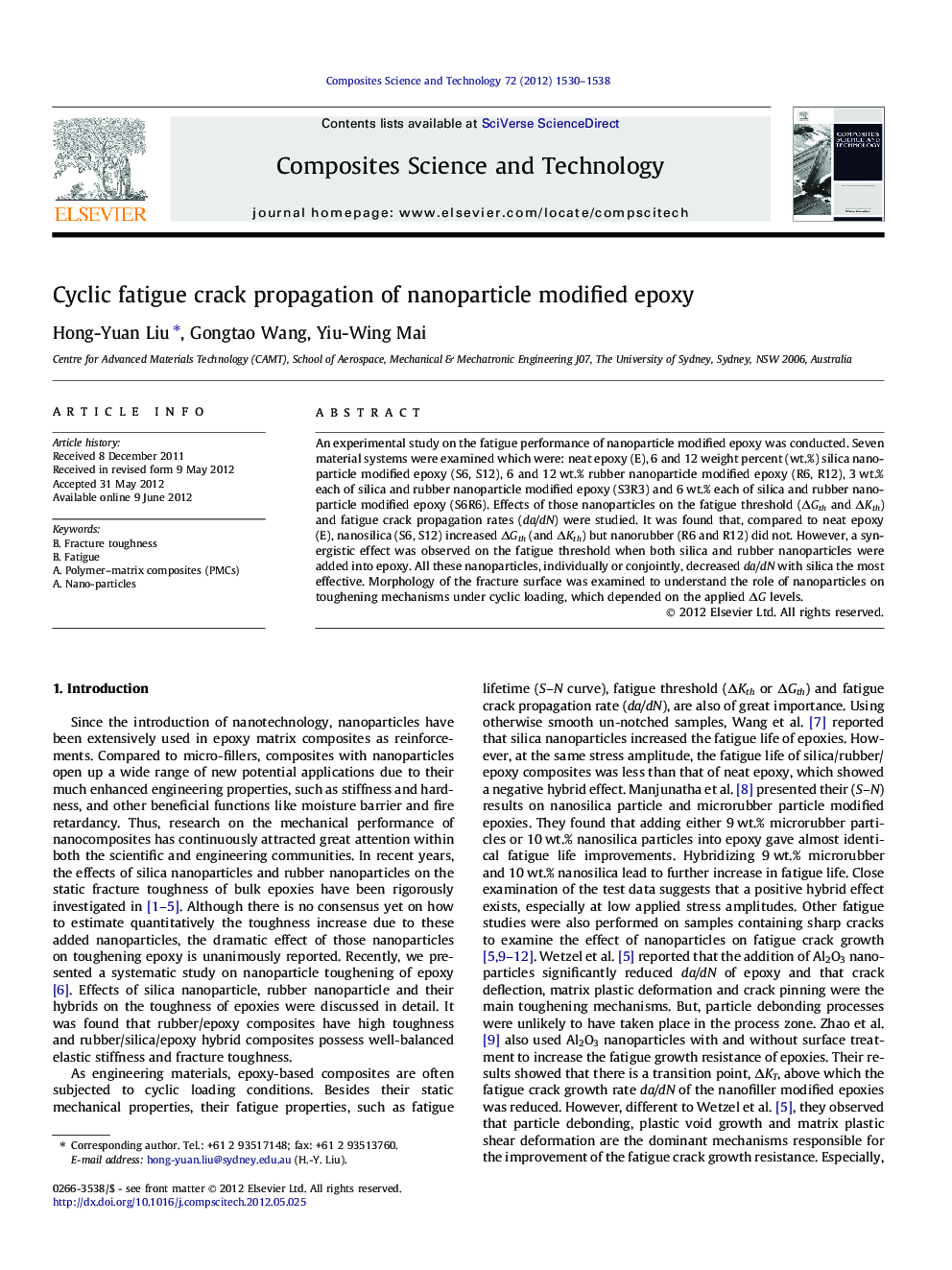| Article ID | Journal | Published Year | Pages | File Type |
|---|---|---|---|---|
| 10425083 | Composites Science and Technology | 2012 | 9 Pages |
Abstract
An experimental study on the fatigue performance of nanoparticle modified epoxy was conducted. Seven material systems were examined which were: neat epoxy (E), 6 and 12Â weight percent (wt.%) silica nanoparticle modified epoxy (S6, S12), 6 and 12Â wt.% rubber nanoparticle modified epoxy (R6, R12), 3Â wt.% each of silica and rubber nanoparticle modified epoxy (S3R3) and 6Â wt.% each of silica and rubber nanoparticle modified epoxy (S6R6). Effects of those nanoparticles on the fatigue threshold (ÎGth and ÎKth) and fatigue crack propagation rates (da/dN) were studied. It was found that, compared to neat epoxy (E), nanosilica (S6, S12) increased ÎGth (and ÎKth) but nanorubber (R6 and R12) did not. However, a synergistic effect was observed on the fatigue threshold when both silica and rubber nanoparticles were added into epoxy. All these nanoparticles, individually or conjointly, decreased da/dN with silica the most effective. Morphology of the fracture surface was examined to understand the role of nanoparticles on toughening mechanisms under cyclic loading, which depended on the applied ÎG levels.
Related Topics
Physical Sciences and Engineering
Engineering
Engineering (General)
Authors
Hong-Yuan Liu, Gongtao Wang, Yiu-Wing Mai,
